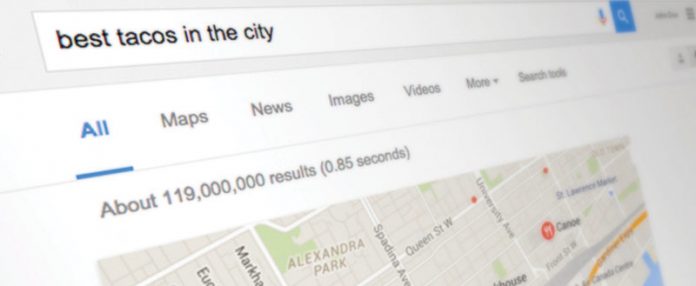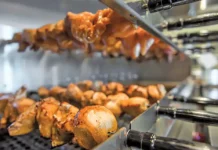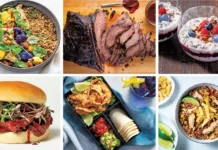
Of all the gin joints, in all the towns, in all the world, Search Engine Optimization (SEO) and Search Engine Marketing (SEM) ensures hungry patrons are directed to yours. Search engines aspire to show the most relevant, sought after results so the person searching gets answers to their question as fast as possible. In other words, if someone searches for “Tacos in New York City,” Pierogi Heaven in Chicago won’t appear in their top results, but Los Tacos No. 1 on 9th Avenue might.
You can elevate your ranking in search engine results by using SEO techniques, which make your website easier for search engines to read. The higher you appear in the results, the better because people will almost always select the websites that appear at the top. Why? Because, good SEO for restaurants means fresh and relevant content. The websites at the top are the most relevant to the search keywords and often provide the best answers and information the searcher is looking for. Therefore, they’re already looking for what you’re selling and will convert into customers faster.
In this post, we’ll take a look at SEO and SEM practices and how you can incorporate them into your digital marketing strategy.
KEYWORDS
The goal is to include words on your website that reflect the searches of prospective guests. If your website is written in a way that provides key information to searchers, you’ll be rewarded by appearing at the top of search engine results.
Choosing keywords should be relatively simple. What is your restaurant trying to promote? What does your restaurant offer? An example would be:
New York, Mexican, Restaurant, Delivery, Dine-in
Once you determine what keywords best reflect your restaurant – a keyword engine like Google Keyword Planner can help you identify the best ones to use – include them in various locations on your website and on your menu, including headers, sub-headers and within body text. You only need to use a keyword once on a page unless it appears again naturally in your writing.
For more specific information on keyword best practices, this is a great resource.
TITLE TAGS
The title tag is the first thing you see in search engine results. Their purpose is to describe the contents of a web page at a glance. According to MOZ.com, the optimal format for a title tag is:
Primary Keyword – Secondary Keyword | Brand Name
For example: Mexican Food – New York | Taco Heaven
To be effective, the title tag should be under 70 characters long to ensure no characters get cut off.
META DESCRIPTIONS
The meta-description appears under the title tag. Its purpose is to impart an attractive summary about the page’s content; where your restaurant is, what type of food you serve and any other pertinent offerings. It should be no longer than 160 characters in length. Short and succinct, this is the carrot you dangle to prompt searchers to learn more and click into your website.
MENU
It goes without saying, but we’ll say it anyway – it’s important to include a digital version of your menu on your restaurant’s website. The question is: what is the best way to display it? PDF seems to have the most well rounded benefits. Not only is it easy for prospects to download, read and forward on, but search engines can also identify and read through text on menus, which adds to your SEO.
When you create your PDF menu, ensure that it’s not a scanned version of your restaurant menu. Scanned menus appear to search engines as an image, making it harder for the search engine to detect the characters.
IMAGES
There’s no better way to tantalize taste buds than by including pictures of your signature dishes on your site. When you do, you have an opportunity to optimize those pictures for image searches by adding a short description of the photo through an alt-tag.
While images aren’t a significant source of traffic, every little bit of SEO helps. Many Content Management Systems (CMS), like WordPress and SquareSpace, will provide a field to add alt-tags when you upload the image, while others may have you add in the code directly to the HTML. In HTML, your link would look like this:
<img src=”TacoTuesdays.gif” alt=”Taco Tuesdays”>
ADDRESS
One of the first things prospective guests look for when choosing a restaurant is location. They’re not alone. Search engines look for this too because it is a determining factor in the relevancy of the results they choose to display. Make your physical address or addresses known.
LINK JUICE AND CONTENT SHARING
The more places that link back to your website, the more search engines recognize you as an important and relevant search result. Yelp, TripAdvisor, Foursquare, Yellow Pages, and Zomato display your key business information and are easy backlinks to your site. In addition to this, when bloggers and online publications link back to your website, their search engine ranking rubs off on yours, increasing your search engine clout.
The SEO term for this is “link juice” and is defined as “the power or equity passed to a site via links from external or internal sources. This power is interpreted as a vote of recommendation towards your site and is one of the most important factors in determining your site’s search ranking.” Thus, the more your website is linked to by other high-ranking websites, the more credible your website becomes in the eyes of search engines.
GOOGLE+ PAGES
All marketing roads should lead guests to your restaurant’s front door and Google+ gives searchers the map. Half social review site, half general information page, a Google+ business page is an essential – and free – page that restaurateurs can employ to increase their SEO. Managing this page is important: it’s the most searchable place beyond your website and it’s home to a star-rated review summary. Make sure you fill in all required fields and provide the necessary verification to be included on Google Maps.
GOOGLE ADWORDS
Google Adwords is the paid version of SEM. While the strategies we’ve discussed so far focus on organic and free ways to increase your SEO, Google Adwords is an additional, paid approach. Essentially, using Google Adwords, you are bidding on a prominent search engine position at the top or along the sidebar of Google and the keywords that will position you there. The more searched the keyword, the more competition there will be for top spot.
Of course, like any digital advertising campaign, you can set geographical perimeters so the ad will only appear to people in a specific location, and you set a daily budget to control your spending. It’s good to note that Google Adwords should be used in addition to other SEO strategies.
SO….
In the big, complex world of the internet, effective SEO and SEM can draw a straight and narrow map from hungry searchers to your website. But SEO for restaurants is not a ‘set it and forget it’ initiative that yields instant results. Ranking well takes time, so be patient.
Remember, the main goal of SEO is for past, present, and future customers to be able to find you on the web. If you’ve employed these easy SEO and SEM tactics, the answer will be yes, and the result for searchers is sure to be delicious – and we aren’t just talking about the link juice.
























Comments are closed.